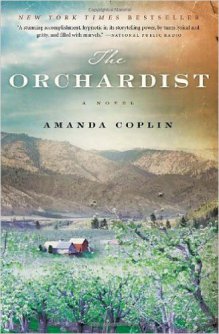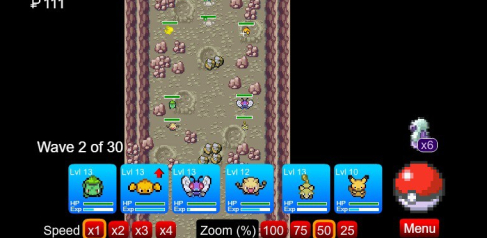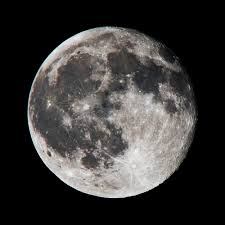Some books have a way of sticking in our heads. This book, The Sword of the Rightful King by Jane Yolen, I’ve had pinging around in my cortexes for years. I distinctly remember reading this book in my elementary school library. It was probably the first Arthurian story I ever read, and sparked a devotion to the genre that lives on today. So I found it on Thriftbooks and I read it as soon as I had a gap between Harry Potter novels, and surprisingly, I found it neither ruined my memory of it, nor really lived up to it (but did leave me with more complicated feelings about it), so here’s my review of Jane Yolen’s The Sword of the Rightful King.
 Jane Yolen’s The Sword of the Rightful King, feat. Howard Pyle’s King Arthur and His Knights, a Barnes and Noble hardback children’s classics edition.
Jane Yolen’s The Sword of the Rightful King, feat. Howard Pyle’s King Arthur and His Knights, a Barnes and Noble hardback children’s classics edition.
As I said, I have distinct memories of certain books from my childhood. The first are the Harry Potter novels because I remember how long the AR tests took when I finished them and how many points they were worth — the completion of the test earned me killer points on my way to a Beanie Baby prize. I also remember The Witch of Blackbird Pond (which I hope to revisit soon), and The Sword of the Rightful King. I think it speaks volumes for my current personality and character that its these three specific books that I remember.
The novel follows the political climate of Camelot (dubbed the older name Cadbury for the novel) as the Witch of the North, Morgause, plots to seize power from Arthur, whom she views as a usurper, and the attempts of Merlin (Merlinnus here) and Gawen, his apprentice, to restore the public’s faith in their king.
Yolen moves around some mythology here. In the original sword/stone story, which if I’m not mistaken, appeared in Thomas Malory’s L’Morte D’Arthur, Arthur secures his throne at a young age by removing the sword from the stone, which the magician Merlin bewitched to end in-fighting between earls once King Uther (Arthur’s father) died. At this time, Arthur is already king, and it appears the throne has been seized dubiously, and we never get a straight answer about how. It doesn’t appear that he’s the heir of Uther, nor that he even has royal blood at all. It is also unclear whether he seized the throne violently or not, as we are only told that Merlin wished he was king and so he was. This refusal on Yolen’s part to commit to a story can be a little frustrating for mature readers who have read the legends, but probably is not too obtrusive for someone with only a vague idea of the original stories (in any of their forms). For me, I found it confused the main plot (that of Arthur’s right to rule) since I wasn’t sure that he did, in fact, have any right to the throne. It’s hard for me to root for Arthur when I’m not sure he isn’t a usurper like Morgause claims, and this is all compounded by the fact that Yolen starts her story not with Arthur, but with Morgause. Because Morgause gets the first word, we might be a little more inclined to side with her, especially because she gives us a clear idea of her right while we’re left guessing with Arthur.
Because the myths themselves are so varied and discordant across sources, Yolen is completely in her right to move pieces around the board here. Much to my dismay, it’s even within tradition for parts of the story to be left out and mixed up and even incongruent with each other, because, again, the source material of the Arthurian legend is anything but clear cut, especially looking across texts. So, outside of the tradition, how does this work in effective novel writing and story telling? Honestly, none of my complaints with the missing pieces or unexplained backgrounds inhibit the story in any way. It’s more my own interest in the stories and the sources that brings this complaint to the forefront.
Returning to storytelling, the ending of this novel is entirely anticlimactic. The entire novel is building towards some great action, whether between Morgause and Arthur, Morgause and her sons, or Morgause and Merlin. There’s a little violence sprsinkedl in early, some dark magic and some light magic, a lot of sword brandishing, and plenty of hot tempers, we have a perfect recipe for a wild climax with some violence or perhaps a duel of some kind. nearly every confrontation in the source stories ends with violence, so it’s there too. Instead, we have a bungled confrontation, an unresolved villain in flight, and a curse that we never hear about again. The biggest action of the story takes place where the reader cannot see it — we are told what happened in dialogue, which for me is a huge let down. It sets itself up for a sequel, but it seems that Yolan is not interested in telling any more of the story past her happy ending, because, she remarks in a Q&A included in the back of my edition, “The rest of the story is about betrayal and death and I don’t want to write that.” That’s fair, but the betrayal and death are the best parts!
What I’ve always found most intriguing with the Arthurian legends is how everyone seems to believed they’re about joy and prosperity (ala the Kennedys) when really they are some of the most tragic, dismal, and heartbreaking legends we have from their period. The original texts feed on human suffering, and no one escapes the story unscathed. I’m disappointed that the story won’t continue. Still, Yolan did include several nods to the ending of the Malory version of the story (which she says everyone already knows, but I would disagree) with a curse that explains Guinevere’s downfall and infertility, suggestions of Lancelot’s betrayal of Arthur, explains the myth of Sir Gawain and the Green Knight, and even darkly hints at the fall of the Round Table. I suppose those will have to content me!
Speaking of the Round Table, I was disappointed with how little they figured in the novel. Lancelot made maybe two pointed appearances (though I will admit both instances spoke to the Lancelot of Malory’s legend, which I thoroughly enjoyed), Gawain was more of a shadow of the legend’s hero of the same name, others like Tristan and Bors and Galahad were name dropped, and the rest of the nights, if included, were lackluster. My favorite part of the Arthurian legends is the brotherhood and homosocial relationships forged between the knights, so I was let down to see that take such a hollow place in this story. They felt like caricatures more than characters, like an embroidered tapestry for the rest of the novel to stand against. I will say that I appreciated that the novel wasn’t overrun with the love triangle of Lancelot, Guinevere, and Arthur, and in fact, the situation was only vaguely hinted at. It was far more devoted to the plot and character development of the four or so main characters than on their relationships to one another (which makes the marriage ending a little rocky for me, but no spoilers).
It’s quite unfair for me to base an entire review on what I wanted from a novel, instead of what was there, but I think it’s important to hold a thing up to the things it seeks to emulate to see the fine nuances in the modern work. This novel got a lot right for me as a modern reader, though it didn’t get it so right for me as a Arthurian legend fan. I took a semester long course on Arthurian texts, where we examined the source materials, the history, film adaptations, and modern retellings, so I have a lot to say about the myths and how modern writers deal with them, but that’s boring! So, instead of continuing to harp on variances from the source materials, which, as I said, Yolen had every right to do, I’ll talk about some of the modern conventions that didn’t really work out for me.
This novel, while not passing the Bechdal test, strives to be a feminist retelling. Or at least, I think so (other works have tried and failed — see The Mists of Avalon by Marion Zimmer Bradley). There will be a SPOILER here because I have to SPOIL it in order to explain the feminist angle so SPOILER ALERT. By having Gunievere disguise herself in as a boy in order to avenge her sister’s honor, and having her be the one who actually removes the sword from the stone, Yolen is using her novel to say, “Yes, in fact, anything boys can do, girls can do better,” but I have to admit that it feels a little hollow. Gawen is a boy until the last ten or so pages of the novel, with no indication that she is a girl at all in her action, experiences, or behavior (which would be marked in a medieval setting), and her biggest moment takes place off stage, the action on which the entire drama sits — though we get plenty of brother’s brawling and assassination attempts on Arthur. But we don’t see her do anything. She’s smart, she’s quick, and she’s brave, but when it matters most, Yolen lets her big moment take place outside of our vision. Her desire to avenge her sister feels more like an afterthought in the face of her desire to help Arthur be a better king and ruler.
I love this idea, but I’m not sure I like how it was executed, especially because she ends up with her Disney princess ending: she gets married. She’s removed from the freedom that her boyish appearance afforded her, exiled from the easy relationship she had with Arthur as a boy servant and friend, and order is restored. There are no more girls running around in pants as she is returned to her proper dress, and she is no longer the apprentice to a mage but a wife, as women should rightfully be. We are shown what happens when women don’t have men to control them — they become wicked like Morgause, hungry for things they should not desire. I applaud this technique as a story telling device because I recall being thoroughly surprised that it was Guinevere that retrieved the sword, but I’m not sure how I feel about it as a feminist device.
We needed more women. Arthurian legend actually has more energetic female characters than you’d think, and not all of them are so easily regulated as good (Guinevere) and evil (Morgause) based on their service to men. I think this was a fun read, but I also think that Guinevere’s most shining moment in myth was not in her duty to Arthur but in her betrayal of him in service of herself and her desires. I also think Morgause had every right to the wrath she felt, since her claim to the throne was much more solid than Arthur’s, especially when we aren’t told what right Arthur has to start with — it begins to feel like Arthur was the obvious choice because he was a man and warrior against Morgause’s status as a woman and a witch.
So clearly, there is a lot to unpack here. As an children’s/young adult introduction to feminism and Arthurian legend: our boxes are checked. The writing style is excellent, the story moves along well, and the characters of Merlin, Arthur, and Gawen are well sorted. It’s nice to read an Arthurian text that’s not aggressively misogynistic, but just because Yolen lets a woman have the glory of the sword in the stone, doesn’t mean this book is feminist. There’s a lot under the surface that’s lurking that keeps me from being able to enjoy this novel as fully as I once did. Still, it doesn’t ruin the fun too badly.
When you revisit books from your childhood, do you find yourself reading them differently? What book did you return to and find it wasn’t quite what you wanted?
Share this:




